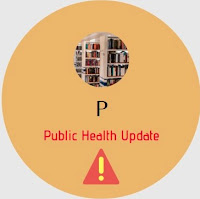Considerations for use of avian #influenza #H5 #vaccines during the #interpandemic and emergence periods
Report of a WHO virtual scientific consultation, September 2024
© World Health Organization 2025 Some rights reserved. This work is available under the Creative Commons AttributionNonCommercial-ShareAlike 3.0 IGO licence (CC BY-NC-SA 3.0 IGO; https://creativecommons.org/licenses/by-nc-sa/3.0/igo).
Executive summary
Avian influenza viruses – particularly A(H5) – pose a significant risk for potential pandemics as they can infect humans and other mammals.
The high mutation rate of influenza viruses raises concerns about their potential to adapt for efficient human-to-human transmission.
Influenza vaccines are crucial tools in mitigating the impact of influenza epidemics and pandemics.
Given the global circulation of A(H5) viruses – especially the spillover to dairy cattle since early 2024 – and the rapidly evolving vaccine landscape, the World Health Organization (WHO) held a virtual scientific consultation on 12–13 September 2024 to review:
-- the current global A(H5) epidemiological situation;
-- the availability and landscape of A(H5) vaccines and their characteristics;
-- updated evidence on A(H5) vaccine immunogenicity, safety and other characteristics;
and
-- considerations for the use of A(H5) vaccines, based on expert opinions.
The consultation did not discuss:
-- A(H5) vaccine stockpiles;
-- A(H5) vaccine regulatory approvals or access issues;
-- mathematical modelling to inform options for use of A(H5) vaccines in the context of other public health measures and stockpiles;
-- acceptance, cost, cost–effectiveness, risk–benefit ratios or other programmatic considerations;
or
-- strategies for animal A(H5) vaccination.
Topics such as equity were also not discussed, as the Pandemic Influenza Preparedness Framework has enabled WHO to make significant progress in preparing for equitable access to vaccines.
The primary objective of the virtual scientific consultation was to update WHO’s Options for the use of human H5N1 influenza vaccines and the WHO H5N1 vaccine stockpile, which was developed during a previous scientific consultation on A(H5N1) held in October 2007.
The participants in the 2024 consultation included:
-- experts from research academia, WHO collaborating centres and essential regulatory laboratories of the Global Influenza Surveillance and Response System,
-- experts from countries,
-- the WHO Strategic Advisory Group of Experts (SAGE) Secretariat,
-- industry associations and other partners.
This report summarizes the outcomes of the virtual scientific consultation, and is expected to be used during the potential update of SAGE recommendations on the use of licensed H5N1 vaccines.
The A(H5) vaccine landscape included in this report is up to date as of 31 March 2025.
A(H5) viruses pose a threat to human and animal health globally. National, regional and global preparedness is needed urgently.
Countries should remain vigilant in conducting surveillance for emerging influenza viruses with pandemic potential.
WHO will continue to monitor the situation and provide updated risk assessments, guidance and technical support, where needed.
(...)
Source: World Health Organization, https://www.who.int/publications/i/item/9789240111462
____


Comments
Post a Comment